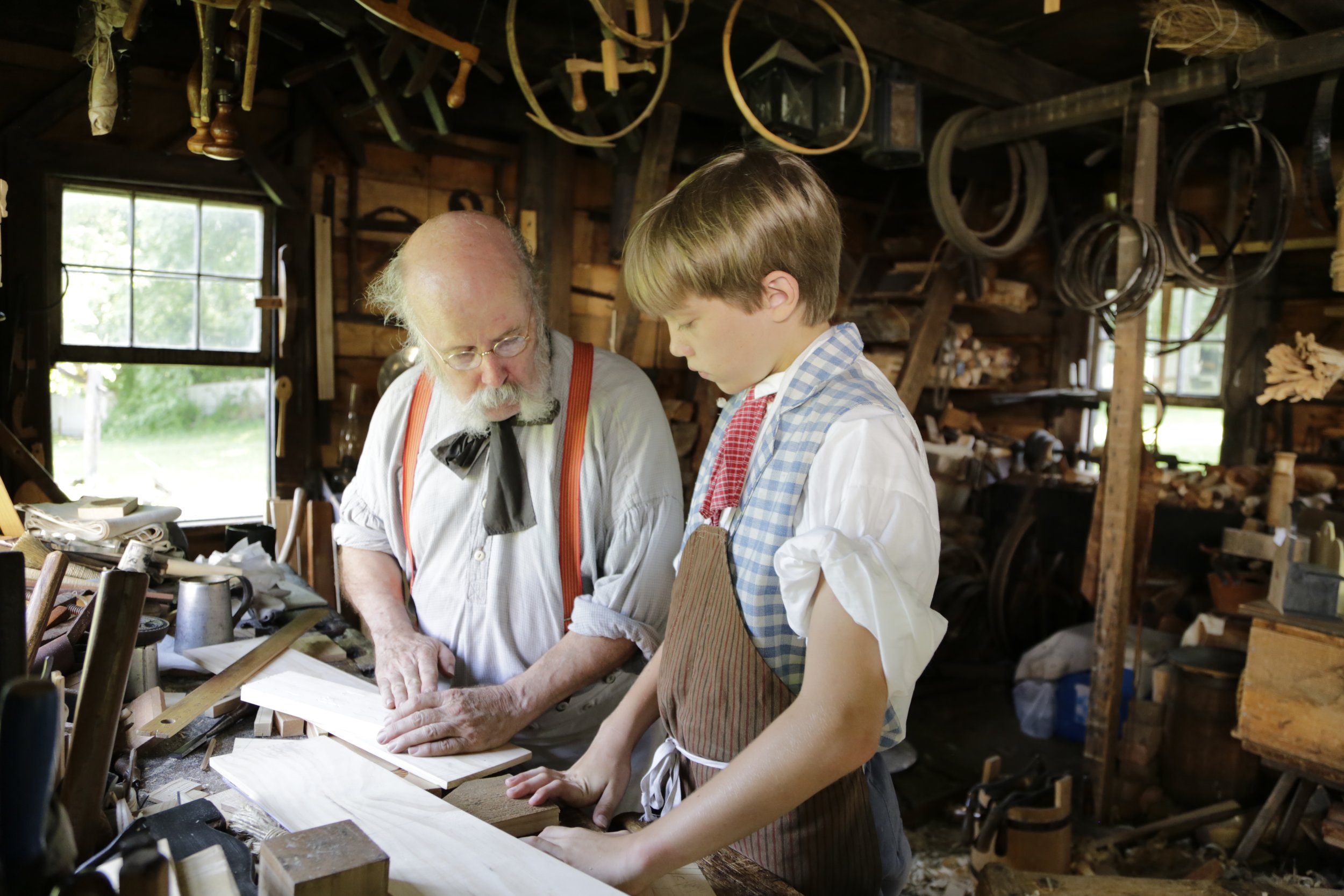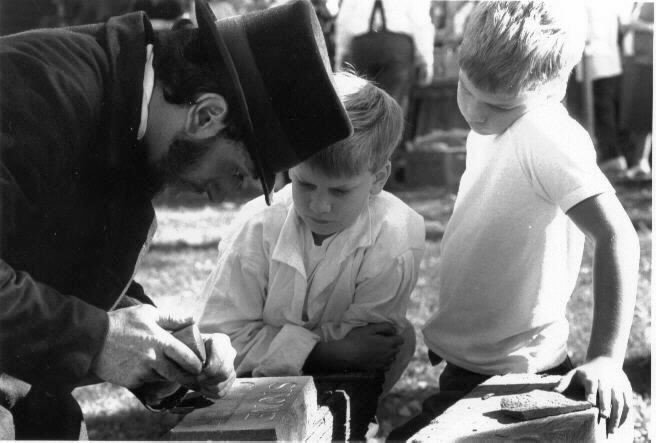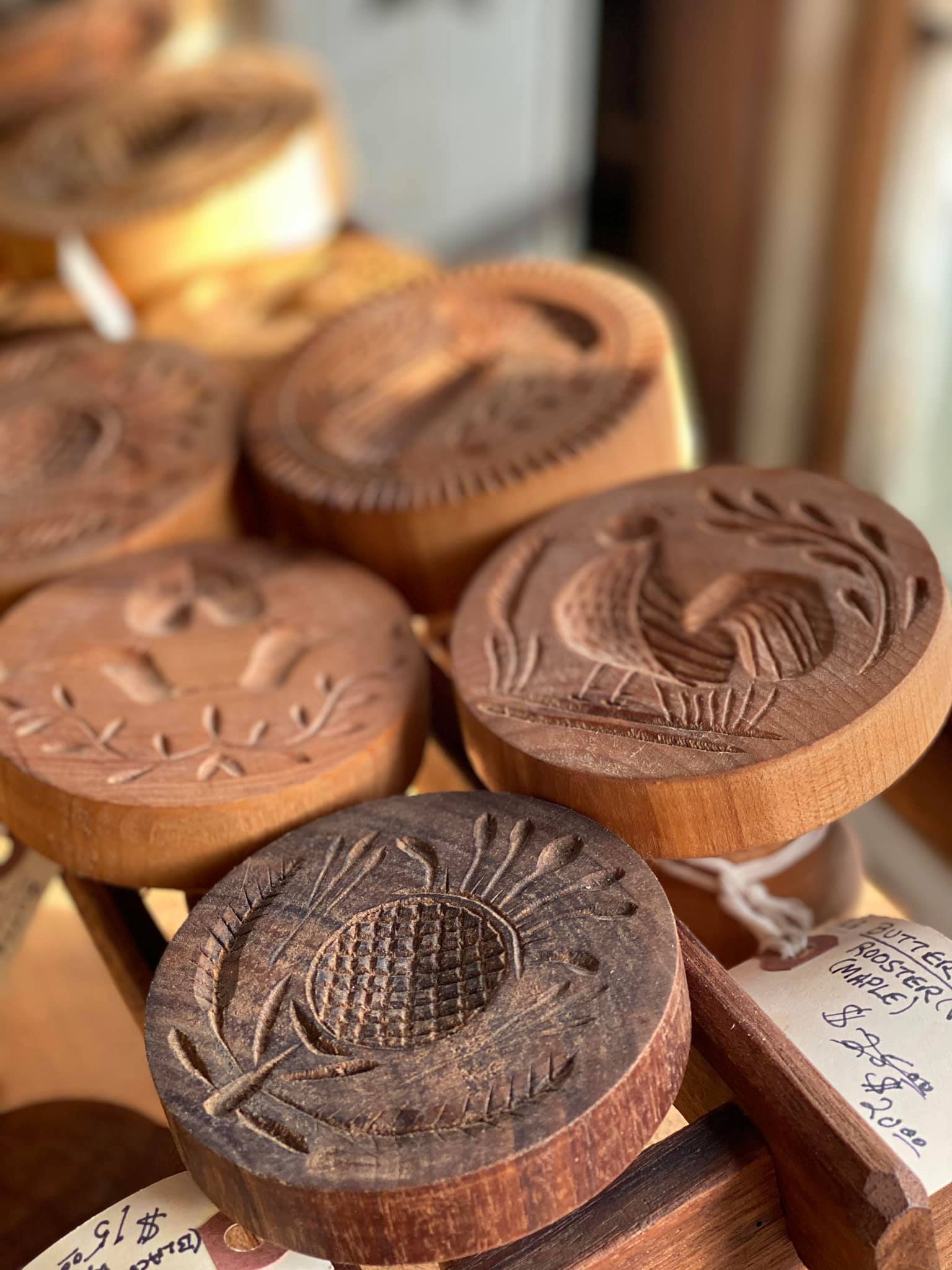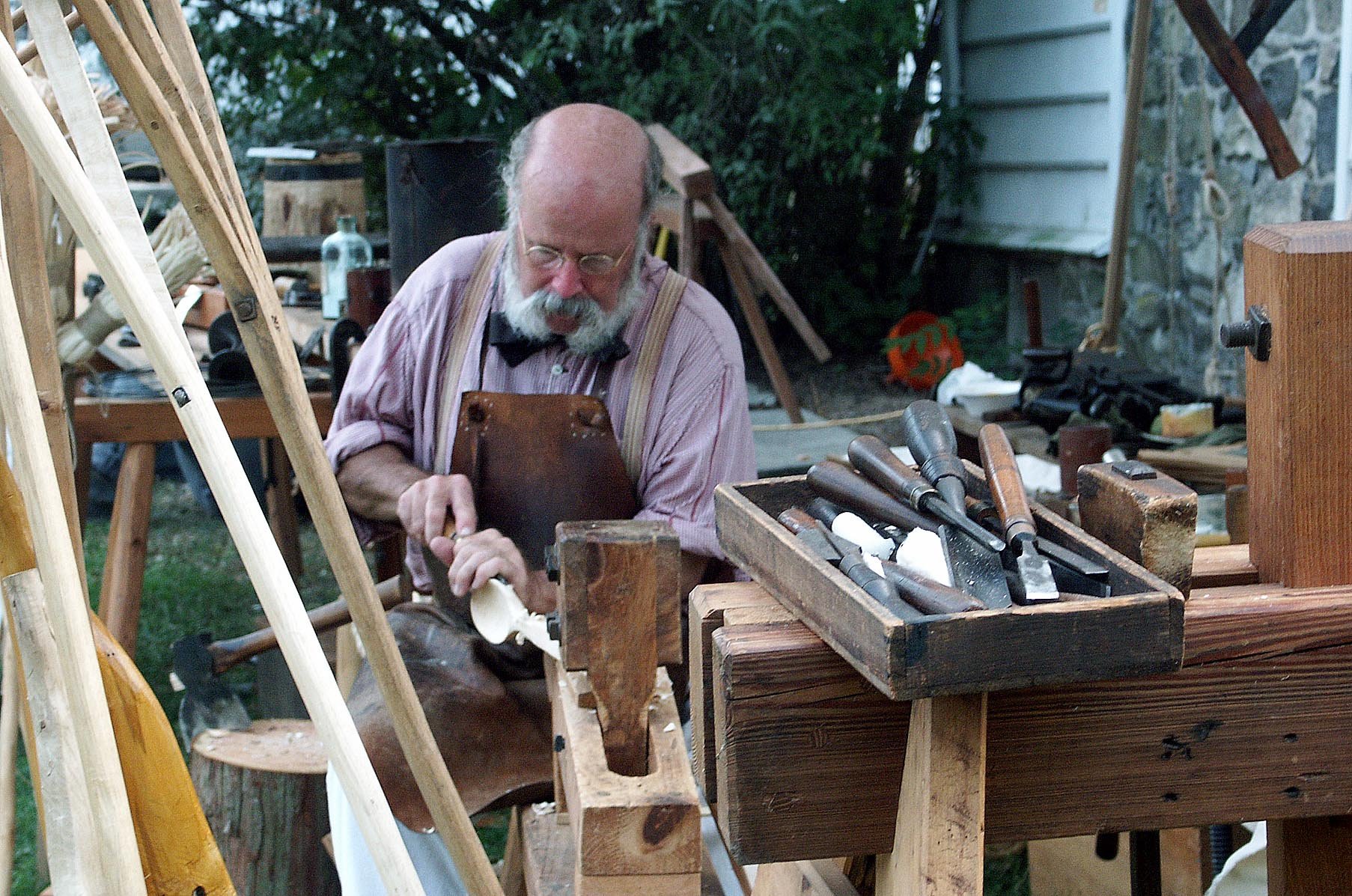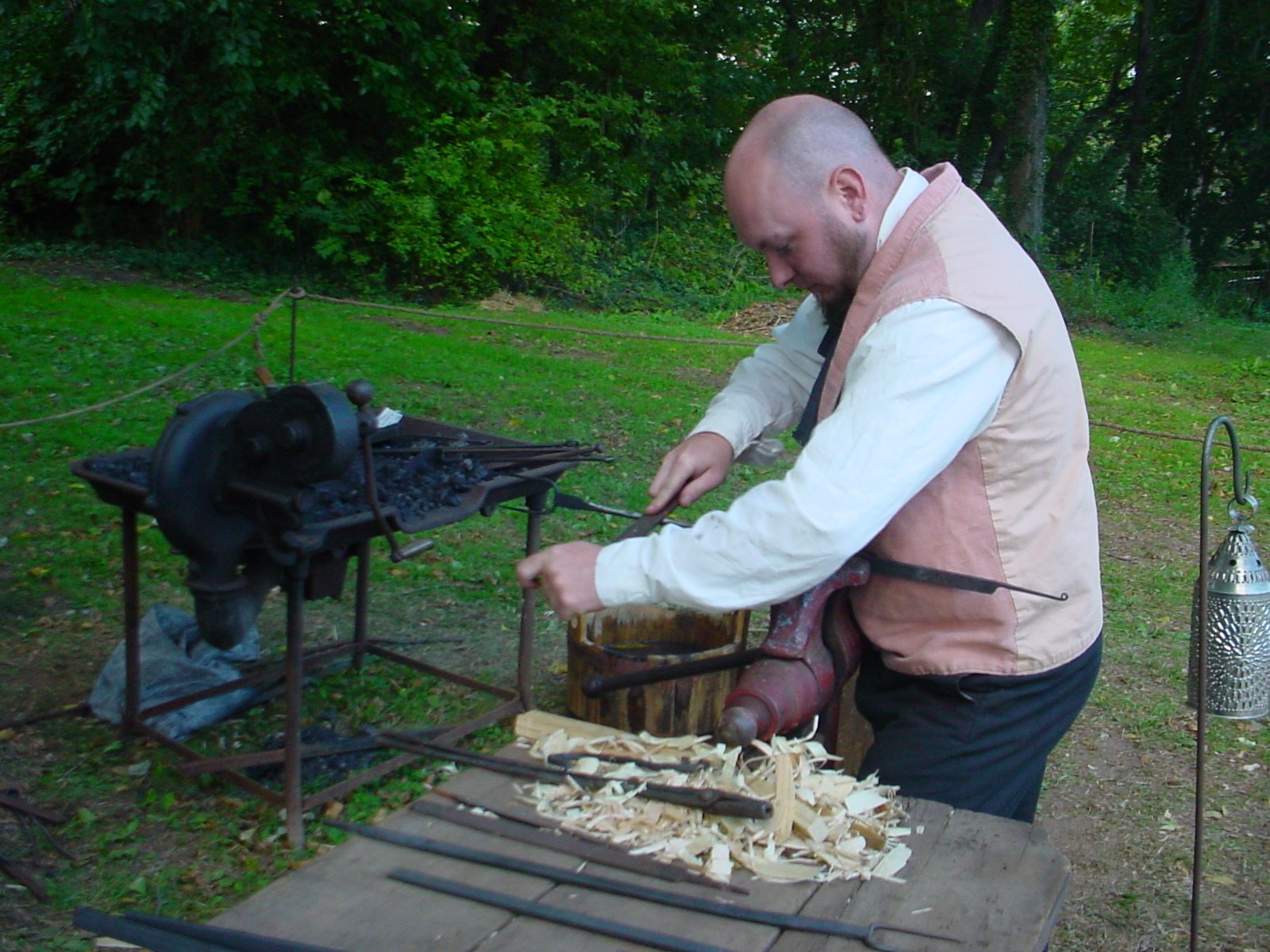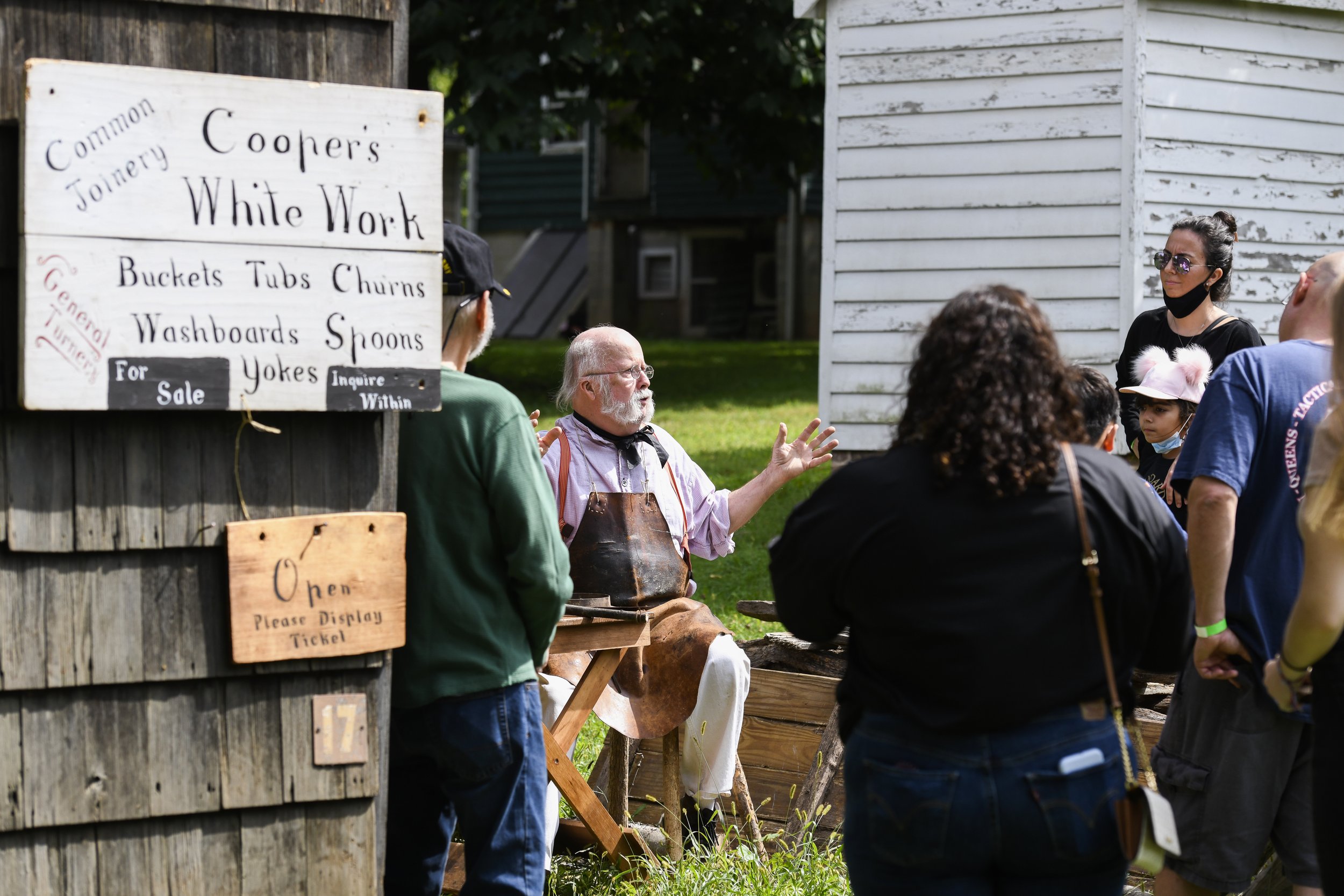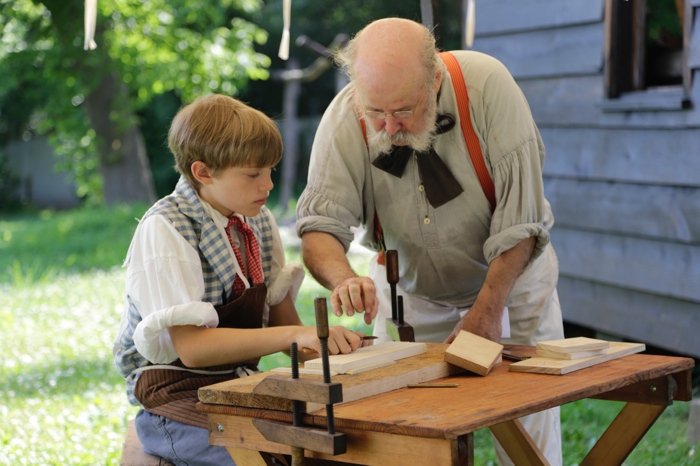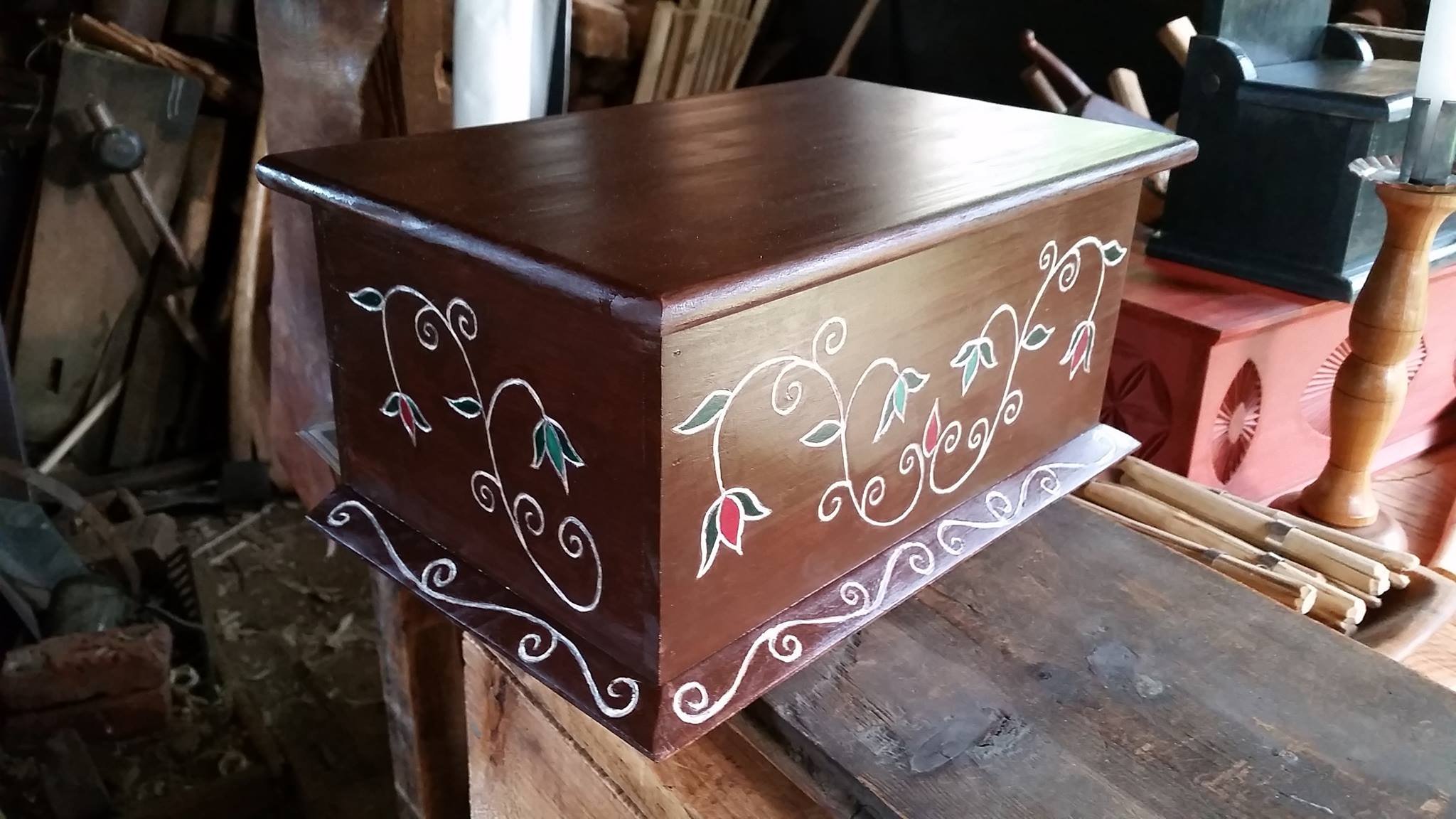
Salt boxes were used by many rural families in the 19th century to store their loose salt. The salt box is constructed of white pine, which has been painted with the word "Salt" hand lettered in a period font.

Candle boxes had a place in nearly every home, both in cities and on farms. Candles, being made chiefly of beef tallow, needed to be protected from the elements and kept safe from mice. This Candle Box is hand carved from white pine. The decorative carving is copied from an extant 19th century example.

Wall boxes were common utilitarian pieces hung most often in kitchens, workrooms, parlors and bedchambers. They were used to keep necessary items close at hand but safely stored.

Ladderback chairs were common in 17th century Britain, and in turn were commonly found in homes in British America and the new American Republic. So named for the slats on the back of the chair, resembling a ladder. Ladderback chairs are made by hand with the legs and cross pieces turned and smoothed on a spring-pole lathe. The rush seat is hand-woven.

Wooden spoons honor the historical art form of pottery, they were generally hand carved from a solid piece of Maple and were individually resulting in completely unique sizes and shapes.
Carpentry
Wood has always been an important resource throughout human history. Woodworking helped us in creating various everyday items such as kitchen equipment, furniture, decorative fashioning of everyday items and so forth. Some of the common items made from wood were candleboxes, spoon racks, salt boxes, mini cabinets and chairs. Learn more below!

